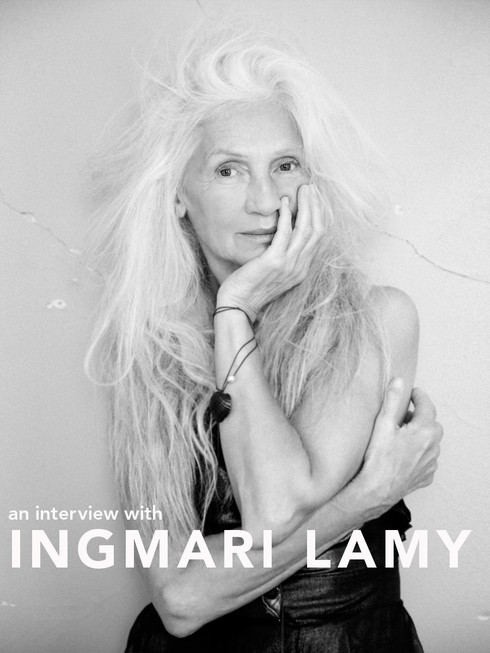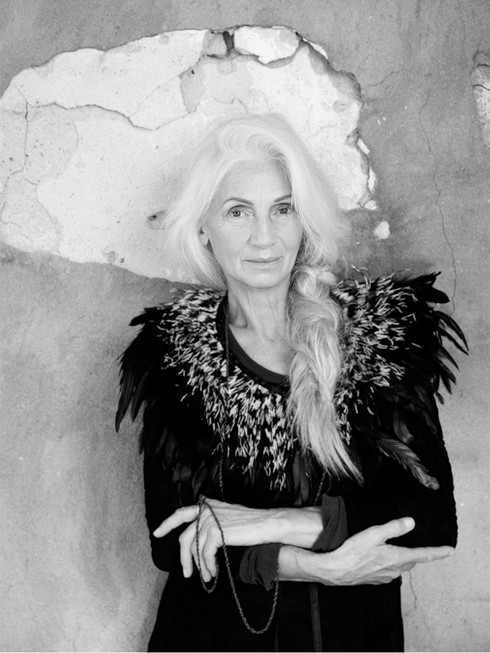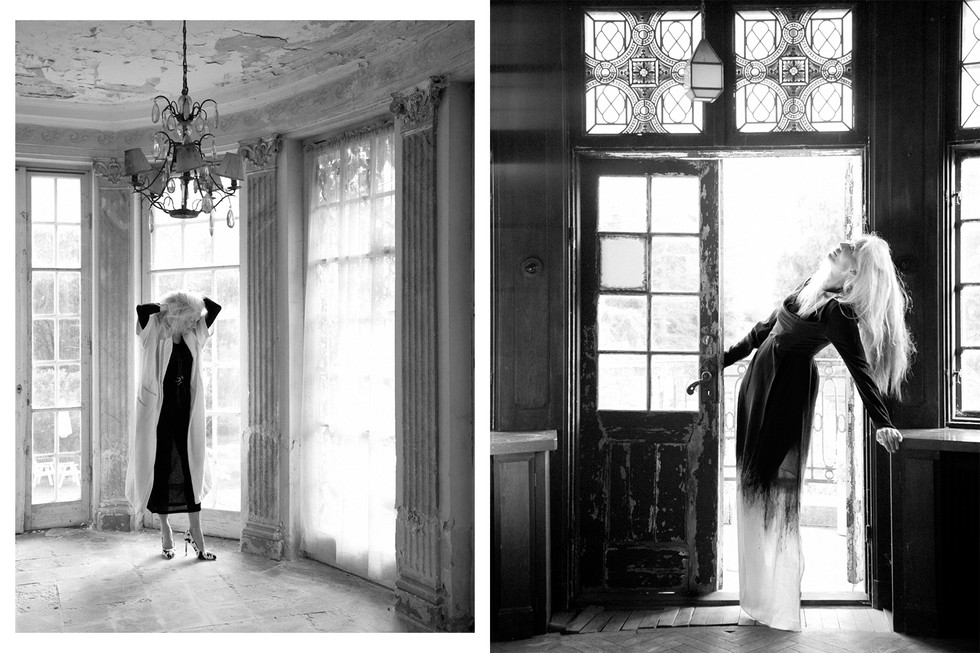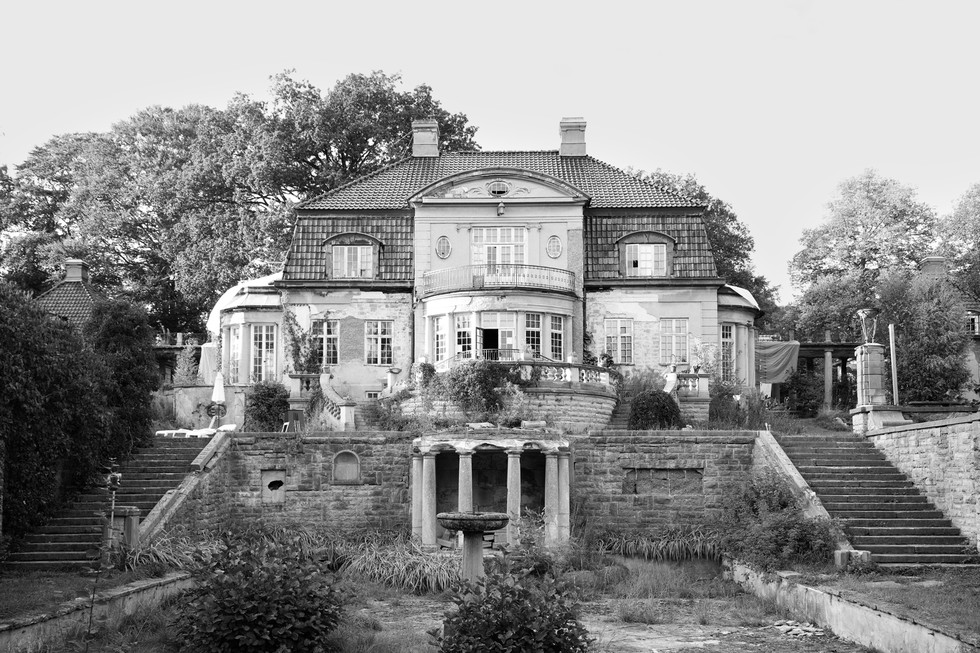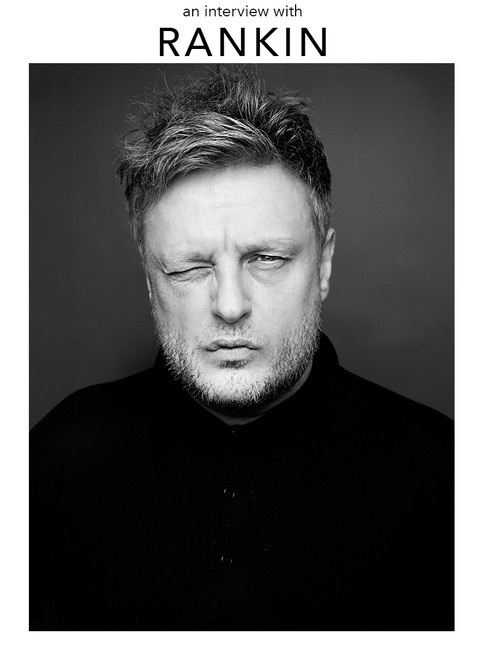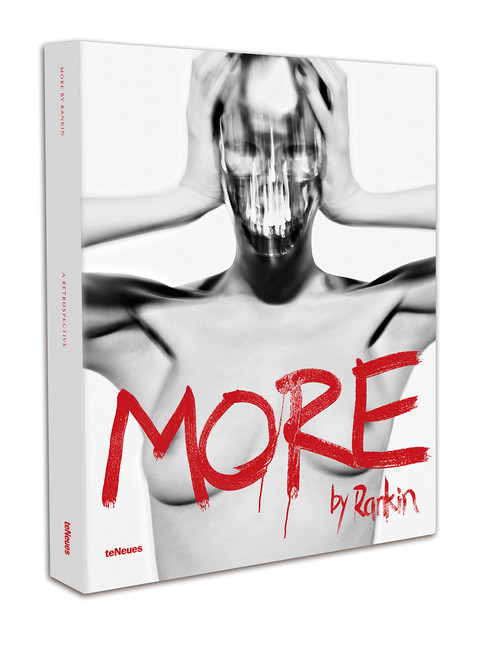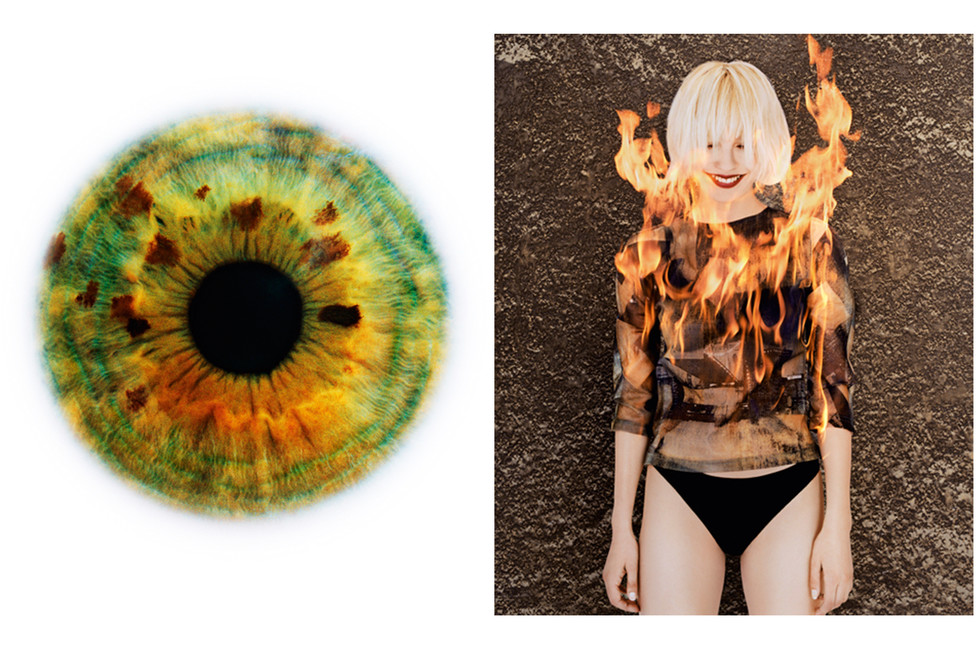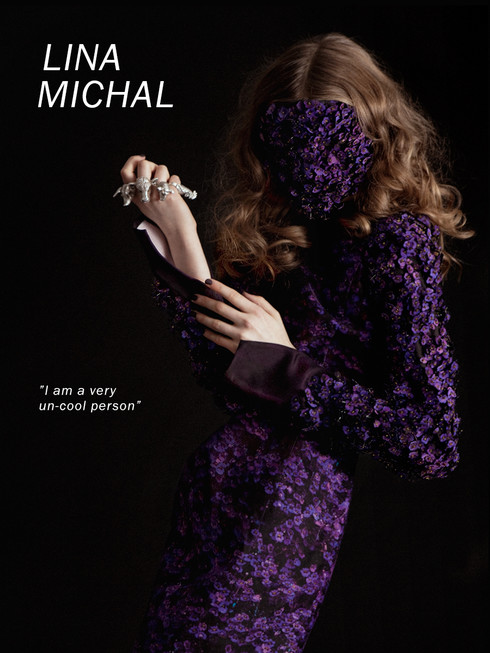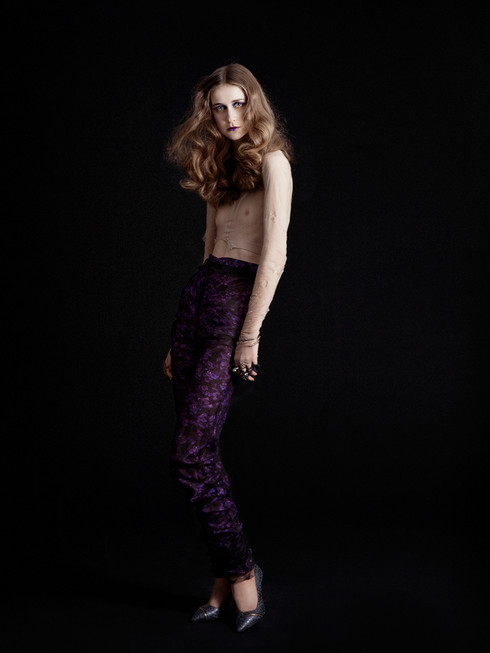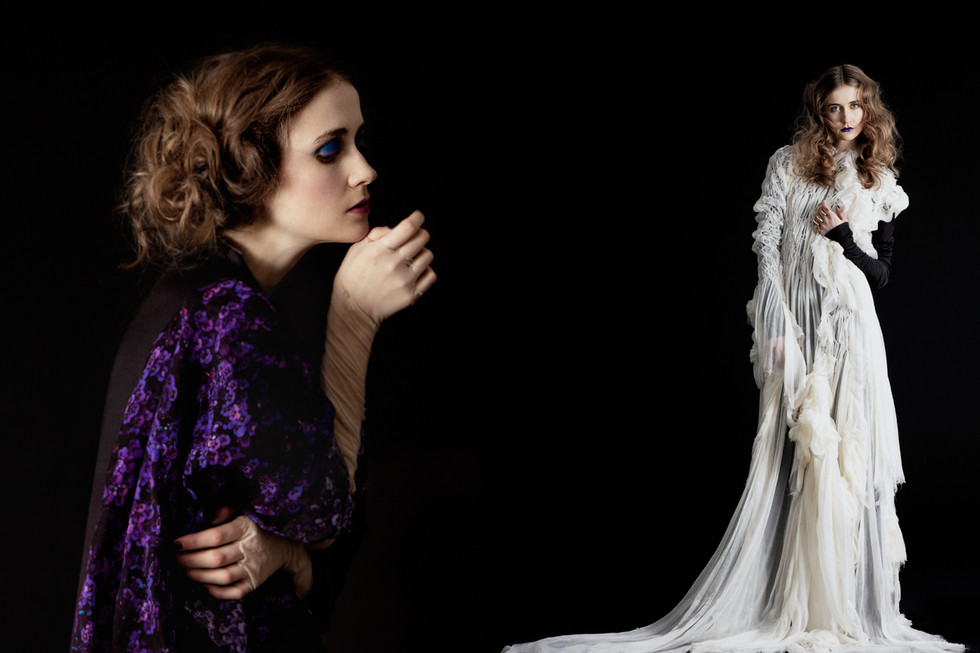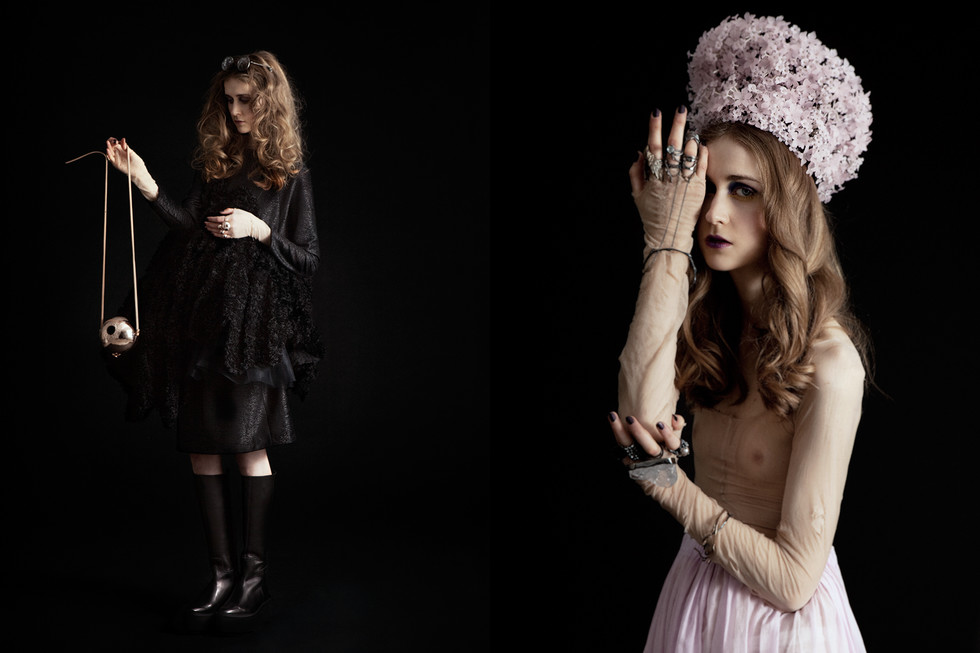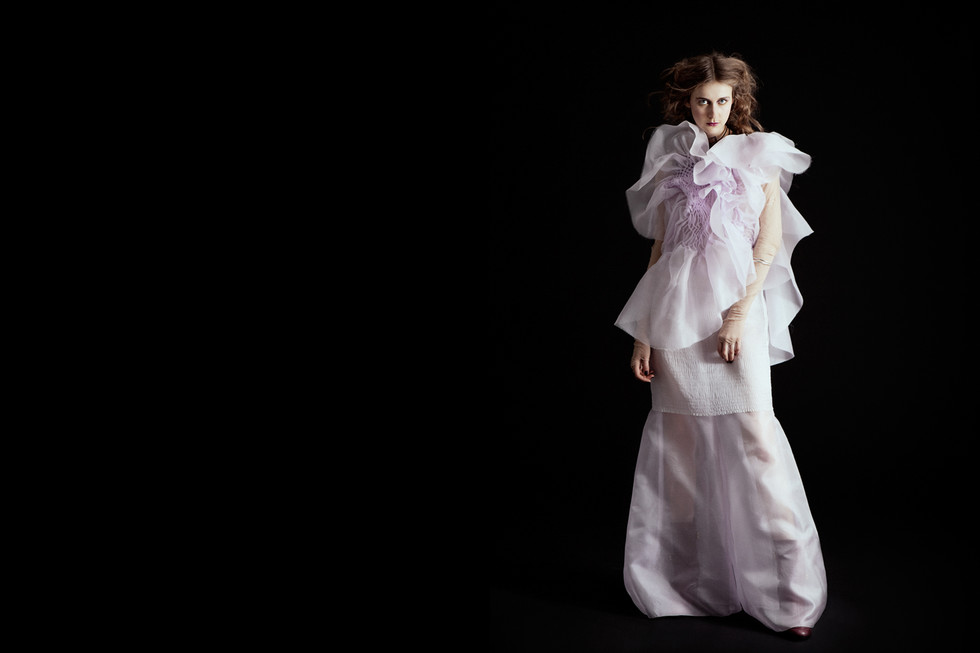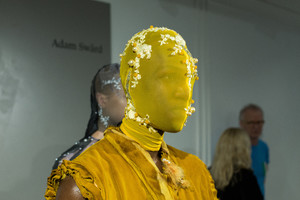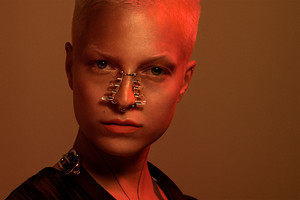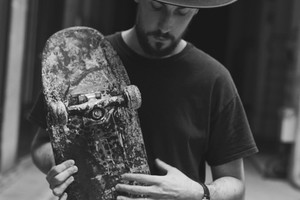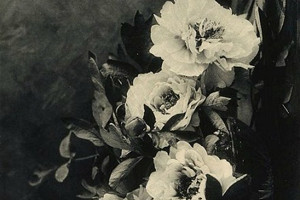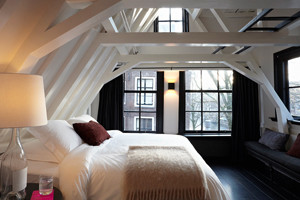An interview with Ingmari Lamy
Written by Sally Kennedy by Michaela WidergrenThe Grace of a Moment with Ingmari
The last thing I said to my colleague before I rushed from my office to meet Ingmari Lamy was ” I’m going to interview a super model. I hope she doesn’t eat me alive”.
It was a cliché, of course, but it was precisely what I was thinking. I was preparing to rush through my interview so I wouldn’t frustrate what I was certain would be a very busy and impatient woman. I also expected the long, white-haired beauty I’d seen in fashion spreads to be toughened by all her years in the modeling business.
Within moments of seeing her, I knew I’d had it all wrong. I would later confess to her that I was convinced that I was destined to meet her, and that she’d enriched my life within the first hour of our simple, intimate lunch in Gamla Stan. It has occurred to me since then that she probably has a similar effect on most everyone she meets. Ingmari is anything but predictable, and I suspect that she surprises people wherever she goes.
We’d planned our meeting carefully and I got there early so I could greet her when she arrived. I didn’t want to miss her since meeting her at all had proven to be difficult. I recognized her immediately and waved her down. As she approached me, I was struck by two things; how gently and gracefully she moved, and how calm she seemed. She stuck out in the midday rush of a lunch crowd in transition, and it made her appearance all the more striking. As if she wasn’t striking enough. We walked along the narrow alleyways of Gamla Stan, chatting and carefully inspecting potential lunch spots. She wanted a relaxed, quiet place to talk and was determined to find an ecological menu. We eventually settled on a pretty little bistro Ingmari knew about and took off our coats before securing our seats. Ingmari looked around, slowly taking in her surroundings, and smiled discreetly. ”This should work, don’t you think?”
I’d started interviewing her already, but up to this point we’d been preoccupied with other activities, like finding a decent menu and avoiding tripping on cobblestones. Now Ingmari was sitting before me, and I had her full attention. She was a stunning woman, indeed. Her soft, gentle face, and clear, bright eyes were framed by long, white hair that hung naturally down to her waist. She was wearing no make-up as far as I could tell and her petite frame was draped in unassuming, pretty clothes that indicated a passion for textiles rather than an effort to stand out. I kept thinking that she looked the way all of us should look at sixty-five; healthy, grounded, and completely comfortable in her own skin. Being beautiful helps, of course, but this was not a woman that made an issue of her looks. Her beauty is just a part of her, and other things, like the environment, spirituality, the detriment of a constantly connected digital world, and the importance of teaching children self-respect, seemed to concern her considerably more.
Ingmari was born outside Stockholm, Sweden in a remote, quiet area. She spent much of her early childhood with her paternal grandparents. When I asked what this time in her life was like, her answer surprised me.
”My grandparents were wonderful, and I was an unusual child”. She went on to qualify her statement. ”I wasn’t interested in the same things as other children my age, and I wasn’t particularly sociable. I spent a lot of time with my grandparents and their contemporaries, and when I wasn’t with them, I was quite content to play on my own. Preferably in our garden and out in the forest.” Her grandparents saw this in Ingmari and indulged her. They let her play alone outdoors for hours and even encouraged her to explore on her own. The forest and nature itself became her playground. Ingmari is convinced that it was in this early stage of life that she developed such a strong sense of self; the platform that has guided her to be the person she is today.
”I have always loved to be on my own and felt comfortable with myself. And I still need a lot of time to retreat and reflect. I am sometimes happiest alone, outdoors, where I can be in the moment without interruptions. I really am a sort of wood nymph at heart”.
I listened intently, wondering how she survived all those years modeling when she was essentially an introspective nature child.
“How did you cope with a career as a model? What was it like working in an environment where so much importance was placed on your appearance?” It seemed incongruent with the things she seemed to embody and value.
”I find the idea of beauty misunderstood. A beautiful appearance and inner beauty are not in conflict with one another if you have a strong sense of self. They come from the same source– your inner essence.” I smiled to myself. She was right, of course.
Ingmari has not exactly kept out of the spotlight. She has worked with the best in the business. In fact, she has worked with many iconic names that define the business: David Bailey, Gian Paolo Barbieri, Gilles Bensimon, Irving Penn, Bob Richardsson, Yves Saint Laurent, and Kenzo, to name but a few. A model scout in Paris discovered her early, and it wasn’t long before she was gracing the covers of Harper’s Bazaar and Vogue. It made sense. I’d seen some of her early modeling pictures and sitting in the bare light of the noon winter sun, she looked as breathtaking now as she did as a young woman.
”Did you want to become a model? Was it something you longed for?”
”It’s always seemed natural to me that I became a model, as if I was meant for it. I believe it’s a part of my life path, and the reason I’m a mentor and guide today. When I was a little girl my grandmother told me that I was going to be famous. She had psychic abilities so I just accepted it. I wasn’t surprised when everything started happening, and in a way, I was prepared. I didn’t get lost in it because I knew myself well. And because I was used to and even enjoyed being alone, it wasn’t hard for me to say no to things I didn’t want to participate in. I’d always had an independent spirit so it wasn’t lonely. And traveling to all those amazing places and meeting lots of different cultures and working with interesting, talented people was fascinating. I took advantage of that, and as long as I could pull back when I needed to, I was happy.”
In 1976, she did just that. She moved to Formentera, Spain after retiring from modeling to focus on her family. At the time, the island did not have electricity, so it was a drastic change in lifestyle. While talking about raising children on the island (Ingmari raised two, Josef and Daga, and also has a bonus daughter, Sinika), I am struck by her generous parenting philosophy. Has she always been this way, I wonder, so grounded and full of integrity? It seems that way. And then it dawns on me. What an incredible model she must be to work with– so present, self-assured, and brave.
”Do you like working in front of a camera?”
”I do. It can be a magical experience. You and the photographer are in your own space, and then you are in your own space with the actual lens. You are in a virtual room where you create something. It’s kind of like acting and it’s quite exciting. Working together with a photographer has always come fairly easily to me.”
Ingmari is also widely regarded as a style icon. She’s managed to integrate fashion, beauty, and awareness on a level that is entirely unique during the six decades she’s been in the business. I ask her how this came about.
“ I never planned to become a style icon. I wasn’t aware of my approach to fashion or beauty when I was younger, but looking back, I can see that there has been a certain theme to my style. And Kenzo has called me his muse, so I must have had a unique style back then, but it wasn’t something I actively thought about. I have always just been myself.”
”Do you have any advice for models today?”
”The modeling business has changed a lot. I never made that much money, even as a cover model of international magazines and as the face of Yves Saint Laurent. Today, these kinds of jobs generate a lot more money. There was a certain freedom in my experience as a model, though. I made choices that felt right for me throughout my career. I think life as a model today is much harsher. I would advise finding a mentor so that you always have support and someone with experience to talk to about your concerns. Also, it’s important to follow your intuitions and maintain your personal boundaries. Trends in the business and model preferences can be a tough environment.”
I am curious to find out what she’s doing now. I know she still models and attends fashion shows regularly, but I’ve heard that she’s doing a lot more. I pop the magical question and another fascinating door opens. She is a writer and has a blog with Rodeo Magazine, lectures and gives courses in self- awareness and inner beauty, is a mentor and coach, and works with a highly specialized form of event planning. Soon, Ingmari will be coming out with a brand of her own. It seems she has always had a lot of good ideas.
“I’ve heard that you once lived and worked in a castle. Is this true?”
“Yes. I lived in a really deteriorated castle on the island Storholmen for nearly six years. I moved into the wing of the castle after meeting the owner, Leif, and his wife. I was planning to open an exclusive, ecological spa with its own range of ecological products at the castle, but for various reasons the project was never fully realized. It was an exciting time, though, and living there was a real adventure.”
“You seem to be so creative, in so many ways. How do you get everything done?”
”Life is such a riddle, don’t you think? I am trying to figure out how to prioritize everything, how to find the time to do the things I find important, and all the while, find balance within that. I am happiest when I can stay in the present and appreciate what is happening now. That is where I find inspiration.”
This is the first time I actually think about Ingmari’s age. Will time run out before she’s had time to do the things she wants to do? I find myself hoping she’ll be able to make them happen. I even find myself wanting to help her make everything happen. When we eventually run out of time, I leave her for a minute to put on my coat. When I return to our table, she’s standing up and looking outside. The sun is starting to go down, as it does at 2 pm in Stockholm, Sweden on a deep winter’s day. I feel regret for her, since I know that she was probably longing to be outside walking in the sun’s rays throughout our lunch. I apologize as I move towards the door and encourage her to head outside before the sun goes down. She smiles at me as the bistro door starts to close behind me, and I hear her say happily, “The sun has set, but I am still here.”

